Introduction
Many organizations, especially business organizations, are trying to transform themselves digitally. COVID-19 has increased people’s familiarity with using digital technology. This condition has driven up the urgency of transforming organizations digitally. Companies need to respond quickly to their customers’ changing digital behavior. However, the success rate in organizations’ digital transformations is surprisingly low despite the vast and rapid flow of information in the current digital era. Even among digitally savvy industries, the success rate has not exceeded 26% (De la Boutetière et al., 2018). In more traditional industries, such as automotive, oil and gas, pharmaceuticals, and infrastructure, digital transformations are even more challenging: success rates are between 4% and 11% (Shooter, 2020). Digital transformation is in a very different paradigm than traditional organizational change. Another study involving hundreds of companies executing significant changes found that digital transformation efforts are significantly more challenging. While in conventional transformation, only 12% of the companies reported that expectations were achieved or exceeded, in the cases of digital transformation, it was only 5% (Baculard et al., 2017). This survey’s results showed that even though conventional transformations also concerned new technology-driven change, the concept was taken to another level in digital transformation. Kohnke (2017) proposed the following six theses regarding digitization:
Thesis 1: Digitization changes the way of working
Thesis 2: Digitization increases the dynamic of change
Thesis 3: Digitization requires new skills and competencies
Thesis 4: Digitization requires new forms of leadership
Thesis 5: Digitization requires new organizational capabilities
Thesis 6: Digitization changes the organizational culture
These six theses indicate that organizational factors undoubtedly play an essential role in the transformation. Therefore, management activities have become crucial (Ylijoki & Porras, 2018). Among the various reasons for digital transformation failure, organizational leaders’ lack of management capabilities rises above the others. Pouring more money into technology does not automatically create more or better technological assets. Digital transformation requires an updated management capability through the modernization of its process (Mihardjo & Rukmana, 2019).
Many researchers argue that management capabilities are lacking in organizations that are unsuccessful in their digital transformations (Jayawardena et al., 2020; Mielli & Bulanda, 2019; Van Looy, 2018). Researchers have conducted many studies to discover the reasons for digital transformation failures and to propose their critical success factors. However, most of those studies are scattered. Many studies involve only a particular capability of the management. Few involve any effort to develop a comprehensive understanding regarding the complete management capabilities necessary to drive digital transformation successfully. Having only a partial knowledge of these capabilities still puts organization leaders at a great risk of failing the digital transformation. Only by recognizing the complete picture of the management capabilities that are crucial for digital transformation will organizations leaders be able to create plans to avoid failure and to develop the required critical success factors. In this study, such capabilities are called transformation management capabilities (TMCs). The present study has addressed the research question: “which capabilities construct TMCs?”
Literature Review
TMCs in Digital Transformation
Vial (2019) performed a literature review on digital transformation. Strategy formulation and changes in organizational structure, culture, and leadership are topics of interest in much of the literature. In their literature review, Osmundsen et al. (2018) found 8 success factors for digital transformation. Those factors are a supportive organizational culture, well-managed transformation activities, leverage of external and internal knowledge, engaging managers and employees, growing information system (IS) capabilities, developing dynamic capabilities, developing a digital business strategy, and aligning business and IS. These two reviews of the literature seem somewhat similar; however, the results are still not saturated. The literature review of Nadeem et al. (2018) shows the need for a more technology-oriented capabilities. For example, digital leadership, agile and scalable operations, digitally enabled cross functional activities, digital artefacts, flexible and scalable digital platforms, internal and managerial capabilities, external collaboration of ecosystems of digital platforms, dynamic capabilities, plug and play capabilities, and operational capabilities, are all necessary. From these three reviews, one can see that there are some similarities and many differences in the factors due to the boundaries of each study. To realize the desired results regarding those factors, the organization’s leaders need the appropriate capabilities.
The differences between the findings of these reviews are understandable. However, many papers with partial results are troublesome for many practitioners. Having an incomplete understanding of TMCs exposes the organization’s leaders to the danger of developing a faulty digitalization strategy. There is still a need for another literature review that can show a more complete picture of the management capabilities necessary for a successful digital transformation. The objective of this paper is to meet that need.
Dynamic Capabilities Framework in Digital Transformation
The dynamic capabilities framework analyses the what and how that enable private enterprises to create and capture wealth in a rapid technological change environment (Teece et al., 1997). Due to the nature of the framework, it is used by many researchers trying to explain the role of certain capabilities in a digital transformation environment (Carcary et al., 2016). For example, the capability to utilize digital technologies to improve the collection of relevant market intelligence information is considered a crucial capability within sensing capability (Matarazzo et al., 2021). The capability to use Internet of Things, big data, and artificial intelligence is considered in alignment with seizing capability from dynamic capabilities framework (Mendonça & Andrade, 2018). For reconfiguring capability, IS capacity is considered a fit within digital transformation context (Osmundsen et al., 2018). Following the steps of these previous researchers, we also identified which of the TMCs fit with certain stages of transformation within the dynamic capabilities framework.
The Research Framework
In the first part of the study, the authors develop a conceptual construct for digital transformation failure reasons. In the second part of the study, they develop a conceptual construct of the critical success factors in digital transformation. Finally, in the third part of the study, they build the conceptual construct of TMCs based on the findings of the first and second parts of the study.
Methodology
This study uses the grounded theory method. As a qualitative method, grounded theory enables researchers to study a certain phenomenon and to discover new theories that are based on the review and analysis of actual data. This method is considered more suitable for this study, which is developing a new concept. It serves a different purpose than a systematic literature review, which collects relevant evidence that fits the pre-specified eligibility criteria on a given topic. The grounded theory method also performs better than a meta-analysis due to the lack of previous studies of the concept.
We used Wolfswinkel et al. (2013) guidance to review the literature rigorously using grounded theory. Wolfswinkel et al. proposed five stages, namely (1) define, (2) search, (3) select, (4) analyze, and (5) present. In the first, define stage, researchers identify the most relevant data set for the study. Only in the second, search stage, do the researchers perform the search for the studies. The third stage, select, refines the sample of studies for review by removing unsuitable works or adding new works. The fourth stage, analyze, shows how qualitative research methods, rooted in grounded theory, extract genuine value from the selected studies. Our analysis in this stage used open coding, axial coding, and selective coding method. The fifth stage, present, contains the two critical steps in writing a coherent overview paper, showing the findings and insights obtained and the critical decisions made during the review process (Wolfswinkel et al., 2013). In this stage, how the findings fit the dynamic capabilities framework is shown.
Analysis
Stage 1: Define – Framing the Scope of the Review
For the current study, the authors chose to select and review only peer-reviewed works. Therefore, the authors browsed for peer-reviewed journal articles and conference proceedings within the Scopus online database. The authors chose the Scopus online database because it is one of the largest abstract and citation databases of peer-reviewed literature available to the authors (Scopus, 2020).
The concept of TMCs in this paper was built on the idea that a set of management capabilities is crucial for organizations to succeed in digital transformation. These capabilities should be effective at avoiding failures and developing required critical success factors. The authors needed to obtain a more comprehensive understanding of factors that contribute to digital transformation failures and success to identify such capabilities.
The authors initiated a search for works mentioning failure reasons for digital transformation. It returned 96 documents. Out of these 96 works, 4 works were duplicates returned by both searches. In the end, the authors needed to retrieve 92 works.
Stage 2: Search – Retrieving Results
The next step was to retrieve the documents. Most can be downloaded directly from Scopus, open access journals, and other free or paid membership-based sources. From 92 documents in the list, only 79 documents could be found, resulting in an 86% retrieval rate. The other 13 were misplaced (the link for one document opened an entirely different document), incomplete, or supposedly needed another paid membership beyond what the authors had at the time.
Stage 3: Select – Finalizing the Review Sample
The initial list contained 96 works. Removing duplicate search results yielded a sample of 92 works, of which only 79 works could be retrieved. We then tried to find out whether the works discussed failures and success factors in the setting of digital transformation or not. As we suspected, only 67 works were fit to be reviewed for the current study.
Stage 4: Analyze – Gaining Insight from Sources
The authors borrowed and adaptatively applied the techniques from grounded theory to help build a thorough understanding of the TMCs. Three main techniques were used: open coding, axial coding, and selective coding. Open coding means that researchers engage in conceptualizing and articulating the often-hidden aspects of a set of excerpts that they noted earlier as relevant during their close reading of a set of single studies (Wolfswinkel et al., 2013). The authors did not go into the research with a blank slate to understand what TMCs really are and to determine their construct. One basic assumption was used as a general comparison. TMCs are management capabilities that are crucial for organizations’ leaders to avoid failures and to develop the required critical success factors for a successful digital transformation. Without this basic assumption, it would be challenging to call out the often-hidden aspects of TMCs in the reviewed works. This assumption was set in concrete terms such as failure and success to focus the search while coding.
The authors assumed that either failure or success factors could be found in any of the works retrieved. Therefore, the works were analyzed just as one group. From the 79 works analyzed, 67 works contained phrases or sentences that might answer the research question. From the 67 works, 31 were found stating failure reasons. All 67 works included phrases or sentences showing critical success factors for digital transformation.
Analysis of the Digital Transformation Failure Reasons
In the open coding step, the authors found 64 reasons that are barriers or challenges and that can lead to digital transformation failure. Through axial coding, the 64 reasons were then grouped into categories based on similar meanings or serving similar purposes, resulting in a total of 29 categories. Not every group contained more than one failure reason. For example, the authors decided that lack of personnel knowledge should not be grouped with other failure reasons, despite only being mentioned in one work.
In naming an axially coded group, the authors mainly used a word or phrase representing the group’s purpose. This word or phrase could be a new word or phrase or one of the terms in the group. For example, a group that consisted of the terms a low level of data security and data protection and cyber security risks was named poor cybersecurity, because this phrase captured the group’s purpose.
Selective coding was used to integrate and refine the 29 identified categories. A main category in the literature-review method was either the subject of the review or directly concerned one or more specific research questions (Wolfswinkel et al., 2013). The present study is about the construct of TMCs, which were built on the failure reasons and critical success factors of digital transformation. The 29 categories were carefully analyzed for possible higher-order groupings. As the nature of this research is reviewing management capabilities in digital transformation, it is considered a fit to use the dynamic capabilities framework for guidance in the selective coding process. The three major categories in dynamic capabilities are sensing (and shaping) opportunities and threats, seizing opportunities, and managing threats and reconfiguration (Teece, 2007). In selective coding, the authors grouped the 29 categories by looking at their nature, whether each of them fitted better in the sensing, seizing, or transformation/reconfiguration group. The selective coding process resulted in 8 main categories: digital ignorance, poor strategy, organization-strategy mismatch, poor investment decisions, people unrest, poor selection of partners, poor execution, and growth indifference. The complete coding results are in the first column of Table 1.
Analysis of the Critical Success Factors in Digital Transformation
The same steps used to analyze the digital transformation failure reasons were performed to create the construct of critical success factors in digital transformation. In the open coding step, the authors found 223 critical success factors for digital transformation. These factors were then grouped into higher categories based on similar meanings or serving similar purposes through axial coding, resulting in 35 categories.
Selective coding was used to integrate and refine the 35 categories that were identified. The 35 categories were carefully analyzed for a possible higher-order grouping. The dynamic capabilities framework was also used as guidance in the current selective coding process. The authors grouped the 35 categories by looking at their nature, whether each of them better fits in the sensing, seizing, or transformation/reconfiguration group. The selective coding process resulted in 8 main categories: digital forces awareness, comprehensive strategy, new organizational architecture, properly financed project, support of people, good strategic partners, excellence execution, and sustainable transformation. The complete coding results are in in the second column of Table 1.
Identifying TMCs: Avoiding Failures and Influencing Critical Success Factors
The next step was to match the contradicting failure reasons and critical success factors of digital transformation. Analysis was performed to identify the management capabilities that can avoid failure and at the same time positively influence the presence of critical success factors. The analysis was performed at the level of axial coding. The grouping of main categories was pretty much done in the previous process when analyzing failure reasons and critical success factors. Therefore, the selective coding process of TMCs was mainly the naming of the main categories. TMCs are a set of management capabilities that include: digital opportunities detection capability, digitalization strategy formulation capability, organizational architecture design capability, transformation resources investment capability, people unifying capability, strategic partners assessment capability, execution assurance capability, and continuity assurance capability. The results of the analysis are in Table 1. Table 2 gives more clarity about the construct by stating the description of each indicator of TMCs.
Table 1: Identifying TMCs from failure reasons and critical success factors

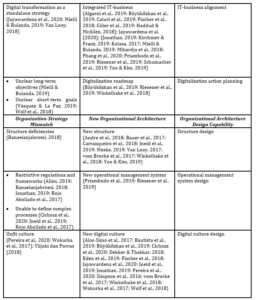
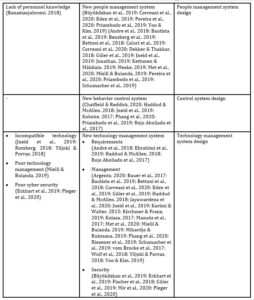

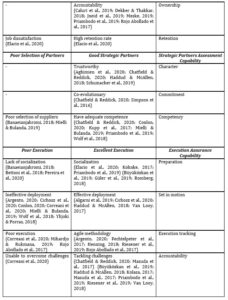
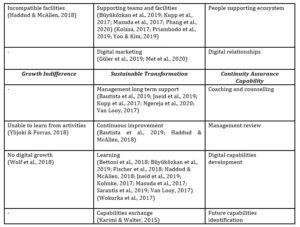
Table 2. The description of TMCs’ indicators
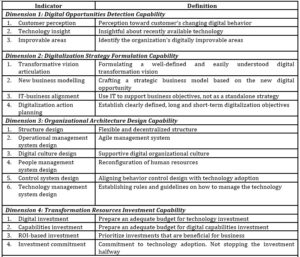

Findings and Discussion
Following the guidelines for conducting a rigorous literature review has proven fruitful. Using open coding, axial coding, and selective coding, the authors found the answer to the research question “which capabilities construct TMCs?”.
It was becoming clear that TMC is a higher-order construct. It has 35 indicators, which are categorized into 8 dimensions: digital opportunity detection capability, digitalization strategy formulation capability, organizational architecture design capability, transformation resources investment capability, people unifying capability, strategic partners assessment capability, execution assurance capability, and continuity assurance capability. Fig 1 shows the second-order construct of TMCs.
Fig 2 shows how the dimensions of TMCs fit within the dynamic capabilities framework. It gives clarity about which capabilities are needed in a particular stage.
There are two different classes of capability: ordinary and dynamic. Ordinary capabilities refer to the capabilities to perform administrative, operational, and governance-related functions. These capabilities are necessary to accomplish tasks. Dynamic capabilities refer to the capabilities to perform higher-level activities, which enable an organization to direct its ordinary activities toward high payoff ones (Teece, 2014).
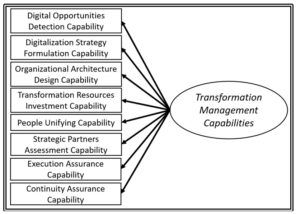
Fig 1. Conceptual construct of TMCs
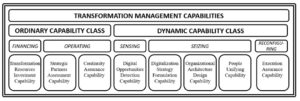
Fig 2. TMCs’ alignment with the dynamic capabilities framework
Among the 8 dimensions of the TMCs, there are 3 dimensions that most likely belong to ordinary capability class. These 3 dimensions are transformation resources investment capability, strategic partner assessment capability, and continuity assurance capability.
Transformation resources investment capability requires the organization’s leaders to be able to allocate adequate funding for technology and capabilities investment. They should prioritize the investment based on the Return on Investment (RoI). No investment should be made when it does not yield a return. It also demands the commitment of the leaders to continue funding the investment as planned and not holding back in the middle of the project.
Strategic partners assessment capability requires the leaders of the organization to possess the capability to select suitable partners. The leaders must assess whether the future partners have good character, commit to the success of the organization, and, most importantly, be competent in the respected field.
Continuity assurance capability requires the leaders to make sure that the organization keeps moving. The leaders must be ready and able to give coaching and counselling to the people who need it. Periodical review of the execution result is required to see how well people do their jobs and whether there are changes or improvements needed in the management system. The leaders must also be able to develop the new capabilities of the organization. Promoting knowledge sharing within the organization and learning from other organizations’ transformation journeys are good ways to do this. The leaders also need to be cautious of the possibility that the organization might need a different set of capabilities and be ready for it in the future.
As we can see from the indicators of the 3 dimensions, they all are the capabilities an organization needs to have a good operational performance. These capabilities are needed even when the organization does not run digital transformation initiatives. The other 5 dimensions without doubt belong to dynamic capability class
Digital opportunity detection capability, within the dynamic capability framework, belongs to the sensing capability. It requires the leaders of the organization to be aware of and capable of detecting ongoing changes early. The changes are usually triggered by new digital technology. They may affect those who use the technology, force the market to change, and/or impact how the organization must transform digitally.
Digitalization strategy formulation capability, within the dynamic capability framework, belongs to the seizing capability. It requires the organization’s leaders to create a vision of the digital transformation and to make it easy to understand. It also requires the leaders to generate a new digital strategy or business model that describes how the organization wants to do its business in more detail. The formulated strategy needs to show that the digital technology introduced to the organization is in alignment with the business itself, not a standalone project. This capability also requires the leaders to draft short- and long-term objectives or action plans in line with the strategy.
Organizational architecture design capability, within the dynamic capability framework, belongs to the seizing capability. This capability demands the organization’s leaders to reconfigure the organizational architecture to support the digital transformation described in the strategy and action plan. The leaders should redesign the management system of structure, operation, culture, people, behavior control, and technology.
People unifying capability, within the dynamic capability framework, belongs to the seizing capability. It requires leaders to possess the skills to drive the organization’s people to support the digital transformation. It requires the ability to influence people to accept change and to get to know what they think and how they feel to support the people involved in digital transformation. Leaders need to show that they care to help the people to achieve success in their jobs. They need to dissolve silos by designing work that requires cross-functional teams. They need to make people feel they are the owners of the project, as happy people mean a high people retention rate.
Execution assurance capability, within the dynamic capability framework, belongs to the transforming/reconfiguration capability. This capability is necessary where the transformation happens. The leaders must prepare people before the new technology is implemented, give feedback when it is set in motion, and continuously track the day-to-day execution. The leaders must be ready and able to make rapid decisions when a challenge or threat appears. They also need to create an ecosystem to support the people involved in digital transformation, from workplace facilities to forming support teams. They must maintain relationships between the organization and customers, partners, and others using digital technology for fast and easy interactions.
Westerman et al. (2012) mentioned the term strong transformation management capabilities. The four key management practices enable the transformation process: transformative vision, digital governance, engagement, and IT-business relationships. A comparison of those four key management practices with the findings of this study makes it clear that the present study provides a more comprehensive construct of the concept than the existing literature.
Conclusions
The authors managed to develop a conceptual construct of TMCs. This is a two-order construct with 8 dimensions and 35 indicators. The findings contribute to the body of knowledge within the field of management on digital transformation. They also benefit practitioners, who may understand more completely which management capabilities they need to develop for a successful digital transformation. In finding the components of TMCs, the study also develops the conceptual construct of digital transformational failure reasons and critical success factors. This brings more clarity of the respective concepts, and it may be helpful for future research. The study also shows where each capability of TMCs fits within the dynamic capabilities framework.
Limitations and Recommendations for Future Research
Due to the lack of access, this study only used a single source database for the peer-reviewed works. Consequently, the present study only reviewed a small number of works regarding failure reasons and critical success factors in digital transformation. A future study might include more databases of peer-reviewed works. The newly developed construct of TMCs opens a path for a scale development that will be useful for quantitative studies. Research considering the impact of TMCs on other latent variables such as cultural transformation, the new business model’s effectiveness, or people’s readiness to transform, will benefit practitioners.
(adsbygoogle = window.adsbygoogle || []).push({});
References
- Aghimien, D. O., Aigbavboa, C. O., & Oke, A. E. (2020). Critical success factors for digital partnering of construction organisations–A Delphi study. Engineering, Construction, and Architectural Management.
- Algarni, F., Ullah, A., & Aloufi, K. (2019). Enhancing the Linguistic Landscape with the Proper Deployment of the Internet of Things Technologies: A Case Study of Smart Malls. Paper presented at the Proceedings of the Future Technologies Conference, San Fransisco.
- Allen, R. (2019). Transformational and digital change: a UK perspective. Organisational Social Dynamics, 19(2), 143-167. doi:10.33212/osd.v19n2.2019.143
- Alos-Simo, L., Verdu-Jover, A. J., & Gomez-Gras, J.-M. (2017). How transformational leadership facilitates e-business adoption. Industrial Management & Data Systems. doi:10.1108/IMDS-01-2016-0038
- Andre, L., Michael, B., Daniel, R., & Christian, K. (2018). Framework for the identification and demand-orientated classification of digital technologies. Paper presented at the 2018 IEEE International Conference on Technology Management, Operations and Decisions (ICTMOD), Marrakech.
- Argento, N. (2020). Institutional ELN/LIMS deployment: Highly customizable ELN/LIMS platform as a cornerstone of digital transformation for life sciences research institutes (1469-221X). Retrieved from
- Baculard, L.-P., Colombani, L., Flam, V., Lancry, O., & Spaulding, E. (2017). Orchestrating a successful digital transformation. Bain & Company, 22.
- Banaeianjahromi, N. (2018). Where enterprise architecture development fails a multiple case study of governmental organizations. Paper presented at the 2018 12th International Conference on Research Challenges in Information Science (RCIS), Nantes, France.
- Bauer, W., Schlund, S., & Vocke, C. (2017). Working life within a hybrid world–how digital transformation and agile structures affect human functions and increase quality of work and business performance. Paper presented at the International Conference on Applied Human Factors and Ergonomics, Los Angeles.
- Bautista, A., León, A., Rojas, J., & Raymundo, C. (2019). Strategic Planning Model to Increase the Profitability of an HR Outsourcing SME Through Digital Transformation. Paper presented at the International Conference on Human Interaction and Emerging Technologies, Nice, France.
- Bensberg, F., Buscher, G., & Czarnecki, C. (2019). Digital transformation and IT topics in the consulting industry: a labor market perspective. In Advances in Consulting Research (pp. 341-357): Springer.
- Bettoni, M., Bernhard, W., Bittel, N., & Mirata, V. (2018). The art of new Collaboration: Three Secrets. Paper presented at the 2019. Proc. of the 19th European Conference on Knowledge Management (ECKM 2018), University of Padua, Italy.
- Büyüközkan, G., Feyzioğlu, O., & Havle, C. A. (2019). Analysis of success factors in aviation 4.0 using integrated intuitionistic fuzzy MCDM methods. Paper presented at the International Conference on Intelligent and Fuzzy Systems, Istanbul.
- Caluri, L., Jianu, M., Cerioli, P., & Silvestri, G. B. (2019). Open Innovation as Enabling Paradigm to Empower Digital Transformation in Oil & Gas Organizations. Paper presented at the Abu Dhabi International Petroleum Exhibition & Conference, Abu Dhabi.
- Carcary, M., Doherty, E., & Conway, G. (2016, Sep 8th-9th, 2016). A dynamic capability approach to digital transformation: a focus on key foundational themes. Paper presented at the The 10th European Conference on Information Systems Management, Portugal.
- Carrasqueiro, S., Monteiro, M. H., Pereira, R., Pereira, C., & Martins, H. (2018). Dematerialization of the medical certificate for driving license in Portugal: a case study of success factors of whole-of-Government e-Government initiatives. Paper presented at the Proceedings of the 11th International Conference on Theory and Practice of Electronic Governance, Galway, Ireland.
- Chatfield, A. T., & Reddick, C. G. (2020). Collaborative Network Governance Framework for Aligning Open Justice and e-Justice Ecosystems for Greater Public Value. Social Science Computer Review, 38(3), 252-273.
- Cichosz, M., Wallenburg, C. M., & Knemeyer, A. M. (2020). Digital transformation at logistics service providers: barriers, success factors and leading practices. The International Journal of Logistics Management.
- Conlon, J. (2020). From PLM 1.0 to PLM 2.0: the evolving role of product lifecycle management (PLM) in the textile and apparel industries. Journal of Fashion Marketing Management: An International Journal.
- Correani, A., De Massis, A., Frattini, F., Petruzzelli, A. M., & Natalicchio, A. (2020). Implementing a Digital Strategy: Learning from the Experience of Three Digital Transformation Projects. California Management Review, 1-20.
- De la Boutetière, H., Montagner, A., & Reich, A. (2018). Unlocking success in digital transformations. Retrieved from https://www.mckinsey.com/business-functions/organization/our-insights/unlocking-success-in-digital-transformations#
- Dekker, M., & Thakkar, A. (2018). Digitalisation–The Next Frontier for the Offshore Industry. Paper presented at the Offshore technology conference, Houston, Texas.
- Ebrahimi, M., Baboli, A., & Rother, E. (2019). Industrial excellence and industry 4.0: Management concepts evolution – Case study in automotive industry. Paper presented at the IFAC PapersOnLine Cranfield, United Kingdom.
- Eckhart, M., Brenner, B., Ekelhart, A., & Weippl, E. R. (2019). Quantitative Security Risk Assessment for Industrial Control Systems: Research Opportunities and Challenges. Journal of Internet Services and Information Security, 9(3), 52-73.
- Eden, R., Burton-Jones, A., & Donovan, R. (2019). Testing the Links from Fit to Effective Use to Impact: A Digital Hospital Case. Paper presented at the ICIS.
- Elacio, A. A., Balazon, F. G., & Lacatan, L. L. (2020). Digital transformation in managing employee retention using agile and C4.5 algorithm. TEST Engineering & Management(January – February 2020), 15217 – 15225.
- Fechtelpeter, C., Kuehn, A., & Dumitrescu, R. (2017). Integrated Technology Transfer Concept For Fostering Innovation in SMEs – Contribution. Paper presented at the 26th International Association for Management of Technology Conference IAMOT 2017, Vienna, Austria.
- Fischer, M., Imgrund, F., Janiesch, C., & Winkelmann, A. (2018). Approaching Digitalization with Business Process Management. Multikonferenz Wirtschaftsinformatik.
- Garcia, J. M. S., & Jerez, D. P. (2019). Agro-food projects: analysis of procedures within digital revolution. International Journal of Managing Projects in Business, 13(3), 648-664.
- Güler, M., Mukul, E., & Büyüközkan, G. (2019). Analysis of e-government strategies with hesitant fuzzy linguistic multi-criteria decision making techniques. Paper presented at the International Conference on Intelligent and Fuzzy Systems, Istanbul, Turkey.
- Haddud, A., & McAllen, D. (2018). Digital workplace management: exploring aspects related to culture, innovation, and leadership. Paper presented at the 2018 Portland International Conference on Management of Engineering and Technology (PICMET), Portland.
- Henning, K. (2018). How Artificial Intelligence Changes the World. In Developing Support Technologies (pp. 277-284): Springer.
- Jayawardena, C. D. W., Ahmad, A., & Jaharadak, A. A. (2020). Synthesis of digital transformation beyond technology perspective: Digital strategy, leadership & culture. Journal of Critical Reviews, 7(10), 349-357. doi:10.31838/jcr.07.10.74
- Jneid, M., Saleh, I., & Fakhoury, R. (2019). Digital Transformation in Justice: Discussion of Challenges and a Conceptual Model for e-Justice Success. Paper presented at the ECDG 2019 19th European Conference on Digital Government, Cyprus.
- Jonathan, G. M. (2019). Digital Transformation in the Public Sector: Identifying Critical Success Factors. Paper presented at the European, Mediterranean, and Middle Eastern Conference on Information Systems, Dubai.
- Karimi, J., & Walter, Z. (2015). The role of dynamic capabilities in responding to digital disruption: A factor-based study of the newspaper industry. Journal of Management Information Systems, 32(1), 39-81.
- Kettunen, P., & Mäkitalo, N. (2019). Future smart energy software houses. European Journal of Futures Research, 7(1), 1.
- Khuntia, J., Mithas, S., & Agarwal, R. (2017). How service offerings and operational maturity influence the viability of health information exchanges. Production and Operations Management, 26(11), 1989-2005.
- Kirchmer, M., & Franz, P. (2019). Value-Driven Robotic Process Automation (RPA). Paper presented at the International Symposium on Business Modeling and Software Design.
- Kohnke, O. (2017). It’s not just about technology: the people side of digitization. In G. Oswald & M. Kleinemeier (Eds.), Shaping the digital enterprise (pp. 69-91). Switzerland: Springer.
- Kolasa, I. (2017). Success Factors for Public Sector Information System Projects: Qualitative Literature Review. Paper presented at the Proceeding of the 17th European Conference on Digital Government Military Academy Lisbon Portugal, Academic Conferences and Publishing International Limited, Lisbon, Portugal.
- Kupp, M., Marval, M., & Borchers, P. (2017). Corporate accelerators: fostering innovation while bringing together startups and large firms. Journal of Business Strategy.
- Masuda, Y., Shirasaka, S., Yamamoto, S., & Hardjono, T. (2017). An adaptive enterprise architecture framework and implementation: Towards global enterprises in the era of cloud/mobile IT/digital IT. International Journal of Enterprise Information Systems, 13(3), 1-22. doi:10.4018/ijeis.2017070101
- Matarazzo, M., Penco, L., Profumo, G., & Quaglia, R. (2021). Digital transformation and customer value creation in Made in Italy SMEs: A dynamic capabilities perspective. Journal of Business Research, 123, 642-656.
- Mendonça, C. M. C. d., & Andrade, A. M. V. d. (2018). Dynamic capabilities and their relations with elements of digital transformation in Portugal. Journal of Information Systems Engineering Management, 3(3), 1-8.
- Meske, C. (2019). Digital Workplace Transformation–On The Role of Self-Determination in the Context of Transforming Work Environments. Paper presented at the 27th European Conference on Information Systems, Stockholm & Uppsala, Sweden.
- Met, İ., Uysal, E. U., Özkaya, K. S., & Orç, E. (2020). Key Success Factors for Strategic Management in Digital Business. In Digital Business Strategies in Blockchain Ecosystems (pp. 283-304): Springer.
- Mielli, F., & Bulanda, N. (2019, 28 April-2 May 2019). Digital Transformation: Why Projects Fail, Potential Best Practices and Successful Initiatives. Paper presented at the 2019 IEEE-IAS/PCA Cement Industry Conference (IAS/PCA), St. Louis.
- Mihardjo, L., Alamsjah, F., Elidjen, E., & Sasmoko, S. (2018). Digital Transformation in the Age of Industry 4. 0: Acceleration of Transformational Performance through Business Model Innovation and Co-Creation Strategy in Indonesian ICT Firms Transformación digital en la era de la industria 4. 0: Aceleración del. Opcion, 86(86), 2145-2159.
- Mihardjo, L. W., & Rukmana, R. A. (2019). Customer experience and organizational agility driven business model innovation to shape sustainable development. Polish Journal of Management Studies, 20, 293-304.
- Mir, U. B., Kar, A. K., Dwivedi, Y. K., Gupta, M. P., & Sharma, R. (2020). Realizing digital identity in government: Prioritizing design and implementation objectives for Aadhaar in India. Government Information Quarterly, 37(2), 101442.
- Nadeem, A., Abedin, B., Cerpa, N., & Chew, E. (2018). Digital transformation & digital business strategy in electronic commerce-the role of organizational capabilities. Journal of Theoretical and Applied Electronic Commerce Research, 13(2), i-viii.
- Ngereja, B., Hussein, B., Hafseld, K. H. J., & Wolff, C. (2020). A Retrospective Analysis of the Role of Soft Factors in Digitalization Projects: Based on a Case Study in a Public Health Organization in Trondheim-Norway. Paper presented at the 2020 IEEE European Technology and Engineering Management Summit (E-TEMS), Dortmund.
- Osmundsen, K., Iden, J., & Bygstad, B. (2018). Digital Transformation: Drivers, Success Factors and Implications. Paper presented at the Mediterranean Conference on Information Systems (MCIS), Corfu, Greece.
- Pereira, C. S., Durão, N., Fonseca, D., Ferreira, M. J., & Moreira, F. (2020). An Educational Approach for Present and Future of Digital Transformation in Portuguese Organizations. Applied Sciences, 10(3), 757.
- Phang, T. C., Chen, C., & Tiong, R. L. (2020). New Model for Identifying Critical Success Factors Influencing BIM Adoption from Precast Concrete Manufacturers’ View. Journal of Construction Engineering Management, 146(4), 04020014.
- Pleger, L. E., Mertes, A., Rey, A., & Brüesch, C. (2020). Allowing users to pick and choose: a conjoint analysis of end-user preferences of public e-services. Government Information Quarterly, 101473.
- Priambodo, A., Handayani, P. W., & Pinem, A. A. (2019). Success Factor for IT Project Implementation in Banking Industry: A Case Study. Paper presented at the 2019 3rd International Conference on Informatics and Computational Sciences (ICICoS), Semarang, Indonesia.
- Riesener, M., Dölle, C., Mattern, C., & Kreß, J. (2019). Circular Economy: Challenges and Potentials for the Manufacturing Industry by Digital Transformation. Paper presented at the 2019 IEEE International Symposium on Innovation and Entrepreneurship (TEMS-ISIE), Hangzhou, China.
- Rojo Abollado, J., Shehab, E., & Bamforth, P. (2017). Challenges and benefits of digital workflow implementation in aerospace manufacturing engineering. Procedia CIRP, 60.
- Romberg, M. (2018). Digitally Mature? Ready for the Digital Transformation? In Digital Marketplaces Unleashed (pp. 57-64): Springer.
- Sarantis, D., Ben Dhaou, S., Alexopoulos, C., Ronzhyn, A., Pereira, G. V., & Charalabidis, Y. (2019). The Evolving e-Governance Curriculum: A Worldwide mapping of Education Programs. Paper presented at the Proceedings of the 12th International Conference on Theory and Practice of Electronic Governance, MElbourne, Australia.
- Schumacher, A., Nemeth, T., & Sihn, W. (2019). Roadmapping towards industrial digitalization based on an Industry 4.0 maturity model for manufacturing enterprises. Procedia CIRP, 79, 409-414.
- (2020, Arpil 29th, 2020). What is Scopus Preview? Retrieved from https://service.elsevier.com/app/answers/detail/a_id/15534/supporthub/scopus/#tips
- Shooter, K. (2020, April 27th, 2020). McKinsey: Unlocking Success In Digital Transformations. Data & Data Analytics Retrieved from https://www.technologymagazine.com/big-data/mckinsey-unlocking-success-digital-transformations
- Simpson, J., Wilkin, C. L., Campbell, J., Keating, B. W., & Stephen, M. (2016). “Iterate Wildly”: Is User Centered Design and Prototyping The Key to Strategic Alignment? Paper presented at the ECIS 2016 Proceedings.
- Teece, D. J. (2007). Explicating dynamic capabilities: the nature and microfoundations of (sustainable) enterprise performance. Strategic Management Journal, 28(13), 1319-1350.
- Teece, D. J. (2014). The foundations of enterprise performance: Dynamic and ordinary capabilities in an (economic) theory of firms. Academy of Management Perspectives, 28(4), 328-352.
- Teece, D. J., Pisano, G., & Shuen, A. (1997). Dynamic Capabilities and Strategic Management. Strategic Management Journal, 18(7), 509.
- Van Looy, A. (2017). A quantitative study of the link between business process management and digital innovation. Paper presented at the International Conference on Business Process Management, Barcelona, Spain.
- Van Looy, A. (2018). On the synergies between business process management and digital innovation. Paper presented at the International Conference on Business Process Management, Sydney.
- Vásquez, J., & La Paz, A. (2019). The Knowledge Body of Requirement Engineering in IST Innovations: An Ontological Analysis. Journal of Technology Management Innovation, 14(4), 78-84.
- Vial, G. (2019). Understanding digital transformation: A review and a research agenda. The Journal of Strategic Information Systems, 28, 118-144. doi:https://doi.org/10.1016/j.jsis.2019.01.003
- vom Brocke, J., Fay, M., Schmiedel, T., Petry, M., Krause, F., & Teinzer, T. (2017). A journey of digital innovation and transformation: the case of Hilti. In Shaping the Digital Enterprise (pp. 237-251): Springer.
- Westerman, G., Tannou, M., Bonnet, D., Ferraris, P., & McAfee, A. (2012). The Digital Advantage: How digital leaders outperform their peers in every industry. MIT Sloan Management – Capgemini Consulting, MA, 2, 2-23.
- Winkelhake, U., Winkelhake, & Schilgerius. (2018). Digital Transformation of the Automotive Industry: Springer.
- Wokurka, G., Banschbach, Y., Houlder, D., & Jolly, R. (2017). Digital culture: Why strategy and culture should eat breakfast together. In Shaping the Digital Enterprise (pp. 109-120): Springer.
- Wolf, M., Semm, A., & Erfurth, C. (2018). Digital transformation in companies–challenges and success factors. Paper presented at the International Conference on Innovations for Community Services, Žilina, Slovakia.
- Wolfswinkel, J. F., Furtmueller, E., & Wilderom, C. P. (2013). Using grounded theory as a method for rigorously reviewing literature. European Journal of Information Systems, 22(1), 45-55. doi:10.1057/ejis.2011.51
- Yehuala, D. M. (2017). Critical Success Factors and Key Performance Indicators for e-Government Projects-Towards Untethered Public Services: The Case of Ethiopia. Paper presented at the International Conference on Information and Communication Technology for Develoment for Africa, Bahir Dar, Ethiopia.
- Ylijoki, O., & Porras, J. (2018). A recipe for big data value creation. Business Process Management Journal, 25(5), 1085-1100.
- Yoo, S.-K., & Kim, B.-Y. (2019). The effective factors of cloud computing adoption success in organization. The Journal of Asian Finance, Economics Business, 6(1), 217-229.












